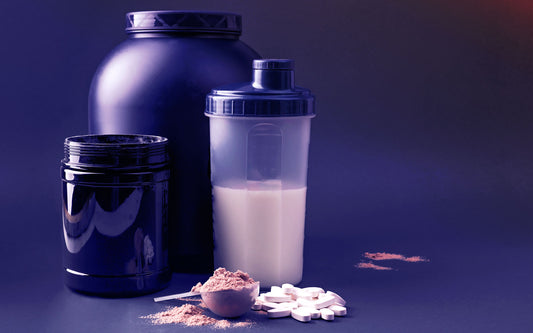Although "calories in, calories out" is considered the basic principle behind long-term weight loss, there's no one-size-fits-all eating plan that works for every person trying to lose weight. It's especially difficult to follow diets with severe calorie restrictions, as not consuming enough calories can lead to fatigue, lack of energy and deficiencies of key vitamins and minerals.
To avoid these problems, many people are turning to the ketogenic diet, which promotes weight loss without the negative side effects of crash diets. Keep reading to learn more about the ketogenic diet and how it's used to help people lose weight and keep it off.
What Is the Ketogenic Diet?
The ketogenic diet is an eating plan that emphasizes fats instead of carbohydrates. Limiting carb consumption causes the body to enter a state of ketosis, which burns fat and promotes weight loss without the fatigue, dry skin and other side effects of severe calorie restriction. As an added bonus, protein and fat promote feelings of fullness, reducing or eliminating the desire to snack between meals.
Following a ketogenic diet has several additional benefits:
- People who follow a ketogenic diet tend to lose more abdominal weight than people on other types of eating plans, improving heart health.
- Limiting carbohydrate intake reduces the amount of water retained by the body. As a result, following the ketogenic diet leads to rapid weight loss during the first two weeks. This quick weight loss makes it easier to stay motivated.
- The ketogenic diet has been shown to decrease triglyceride levels, which may reduce the risk of heart problems. In one study, triglyceride levels decreased significantly after 24 weeks of following the ketogenic diet.
- In some people, following the ketogenic diet reduces the amount of LDL cholesterol in the bloodstream. LDL is known as "bad" cholesterol because it contributes to the build up of plaque on the walls of the arteries. The ketogenic diet may also increase the amount of HDL cholesterol in the bloodstream. HDL is the "good" cholesterol that promotes heart health by carrying cholesterol to the liver to be eliminated from the body.
- The ketogenic diet may even reduce blood sugar and insulin levels, giving Type 2 diabetics better control over their health.
Ketosis and Metabolism
A drastic reduction in carbohydrate intake puts the body into ketosis, a metabolic state that allows fat to be used as a source of energy. During ketosis, the body turns some of the fat in the liver into ketones, which are chemicals that can be used as fuel when there isn't enough glucose available. Ketosis also reduces insulin levels, which may reduce the risk of heart disease in some people.
Types of Keto
The ketogenic diet isn't a one-size-fits-all eating plan that works the same way for everyone. Several variations of the diet exist, offering much-needed flexibility for people who have special health and fitness considerations. The standard version of the diet is high in fats and very low in carbohydrates; it also highlights the importance of moderate protein intake. Typically, a person following the standard ketogenic diet would get 70% of their calories from fats, 20% from protein and just 10% from carbs.
The high-protein version of the diet increases the recommended protein intake to 35% and reduces the suggested fat intake to 60%. This type of ketogenic diet is the most restrictive when it comes to carbohydrate intake, as carbs only make up 5% of a person's daily calories. The targeted ketogenic diet modifies the standard version by relaxing the carbohydrate restrictions on workout days. It's ideal for people who engage in vigorous exercise several times per week. For people who are sedentary or exercise at a slower pace, the standard version is typically recommended.
Another variation on this eating plan is the cyclical ketogenic diet, which offers a bit more flexibility for people who struggle with restricting their carbohydrate intake. Instead of following the same eating patterns every day of the week, the cyclical ketogenic diet modifies the standard keto diet by adding a carb cycle every few days. This is also known as refeeding. People following the cyclical version of the ketogenic diet typically follow the 70/20/10 pattern for several days, increase their carb intake for two days and then return to the 70/20/10 pattern.

Following the Keto Diet for Health and Weight Loss
The ketogenic diet is more than just a diet--it's a lifestyle change. You're more likely to be successful if you spend time preparing your kitchen and learning how to shop for keto-friendly foods before you start following the recommended eating plan.
Meal Prep
When you first start the ketogenic diet, choose one or two high-protein foods that can be prepared ahead of time. This makes it easier to stick to the diet even if you get busy at work or don't have a lot of time to cook each night. Eggs and chicken are some of the best options, as they can be prepared in several ways to prevent boredom. They also keep well in the refrigerator, eliminating food waste.
It's also important to stock up on low-carb vegetables. Broccoli, bell peppers, cucumbers and cauliflower are low in carbohydrates, but they're packed with nutrients that can help you maintain your good health. They also contain fiber, which improves digestive health and keeps you feeling full between meals. Washing and cutting your vegetables ahead of time makes it easier to avoid turning to high-carb snacks if you get hungry.
Getting Familiar with Fats
Fats don't have a great reputation, mostly because there's a lot of confusion about whether eating fat causes people to gain weight. The truth is that weight gain is caused by an energy imbalance, or consuming too many calories without burning them off. You don't need to eat thousands of extra calories per day, either. Even if you consume 1,200 calories daily, it's still possible to gain weight if you're sedentary or get very little exercise.
Monounsaturated fats and polyunsaturated fats come from nuts, fish, avocados, olive oil and many other foods included in the ketogenic eating plan. These are the "healthy" fats that reduce the risk of heart problems. The ketogenic diet also includes foods like bacon, mayonnaise and butter. Although these foods do have some saturated fat, the human body needs fat to carry out some of its most important functions. Eating these foods in moderation helps you avoid the negative effects of excess carbohydrate consumption.
Pantry Changes
The easiest way to stick to the ketogenic diet at home is to make sure your pantry isn't filled with high-carbohydrate foods that could derail your progress. Before you begin the keto diet, remove these foods from your shelves:
- Chips, pretzels and other packaged snack foods
- Bread
- Pasta
- Cereals
- Sweets (candy, cookies, etc.)
- Kidney beans and other legumes
- Vegetable oils
- Seed oils
- Other high-carb foods
Don't forget to check your fridge for low-fat dairy products, which typically have sugar added to make up for the missing fat, starchy vegetables and fruits that are high in sugar. High-sugar fruits include apples, oranges and pineapple. If you're concerned about food waste, pass them on to a friend or donate unopened items to a local food pantry.
Snack Options
Every once in a while, you need a snack to keep you going until your next meal. Chips, candy and other traditional snack items are high in carbohydrates and calories, so you need to be prepared with high-fat, high-protein snacks. Here are a few options:
- A few ounces of nuts
- Cheddar or mozzarella cheese
- Hard-boiled eggs
- Bell peppers with an avocado-based dip
- Beef jerky
- Full-fat Greek yogurt with nuts or seeds mixed in
- "Bombs" made of nut butter, coconut oil, 90% dark chocolate and other keto-friendly ingredients
The Bottom Line
The ketogenic diet isn't a magic bullet for weight loss, as you have to follow it consistently to see results. If you restrict your carbohydrate intake and focus more on fat and protein, however, it's possible to lose weight and keep it off. You may also find yourself with more energy for enjoying your busy life, making the ketogenic diet a win-win proposition.




